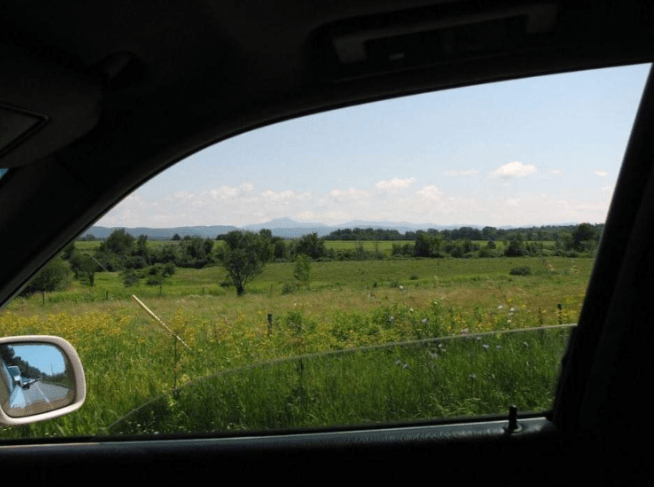Edward Bayliss
You are neither here nor there,
A hurry through which known and strange things pass
As big soft buffetings come at the car sideways
And catch the heart off guard and blow it open.
(“Postscript”, Seamus Heaney)
Excuse my crude misuse of the English language, but to see something’s beforeness, duringness, and afterness in the space of a few seconds is beautiful. To have its shape, its colour, and its detail, all at the mercy of distance and speed is beautiful. Some things are better seen fleetingly, in a moment, in a movement.
Here in “Postscript”, Heaney celebrates the pleasures of driving, or more particularly, the pleasures that the car windows afford. He feels the welcome impact of ‘big soft buffetings’ that ‘come at the car sideways’. These buffetings are images of objects seen through the vehicle windows, shifting and turning as the car sweeps along the Flaggy Shore of County Clare. I say images, because what Heaney sees are different representations of the object, and never the simple fact of the object itself.
Heaney is ‘neither here nor there’, almost as though he is driving at night. It feels exciting but also dreamy and unreal. Things are ‘known and strange’; we might imagine salt, rain, and grass on the air, playing against each other in an eddy of aromas. And, what about depth of view? It seems silly to say, but a hedgerow immediately beside the road (in the foreground, if you like) appears as a blurred flash of green and grey, pleasingly anonymous to us. Something further away, say a house nearer the horizon, moves more slowly on its conveyor belt, is seized more easily by our sight. First, we see its red brick, grey slate gable for a second, then its East facing façade comes into view – maybe it has round windows, or a gutter hanging loose from last night’s wind. Last, we see a packed dirt path moving from its porch into a well tilled field – the sum of all these parts painting a greater and more intriguing picture, a picture that shifts and surprises.
It’s at the overlap of craft and chance that the ‘heart is caught off guard and blown open’. You have the constant and intelligent movement of you and the car treading tarmac in a regular rhythm – one that we’re all too familiar with. Your feet press at the pedals, while your fingers snatch at indicator arms and gear shifts. Then we look to the outside, to this assemblage of images which grow and shrink, dancing in curious patterns; all dependent on their place on the plain. This is the ‘chance’ or the coincidental, with the former being the ‘craft’. Fantastically, this seems to me to hold a mirror to Heaney’s poetic method. In an essay for The Guardian, Heaney once said:
‘I think the process is a kind of somnambulist encounter between masculine will and feminine clusters of image and emotion.’
This masculine will is both metaphorically and literally the ‘vehicle’ on which the feminine clusters of image (shifting objects on our plain of vision) ride. And this car isn’t the futurist Marinetti’s ‘roaring motor-car which seems to run on machine-gun fire… hurled along earth’s orbit’; it’s existence is more dependent. It doesn’t attack Heaney’s countryside; it absorbs it, just as you do.
Your eyes never land squarely on an object as its edges aren’t fully there – they tilt and blur as you move past them. The form of a tree might fold into dozens of different shapes in a constantly altering state of animation. Its limbs bend and contort and cut the sky at changing angles. This is a stunning quality that is so often overlooked, and one that can only be seen in so small a span of time.
Better than staring at a dead end object ad infinitum, I think.
Too often we stare too long and too hard at things – let’s watch pictures play on their plains. That’s why it’s ‘useless to think you’ll park and capture it more thoroughly’. So, let the scenes outside the car window wobble on your palm, if only for a second, and we might then enjoy a fuller and brighter picture from the passenger seat.

